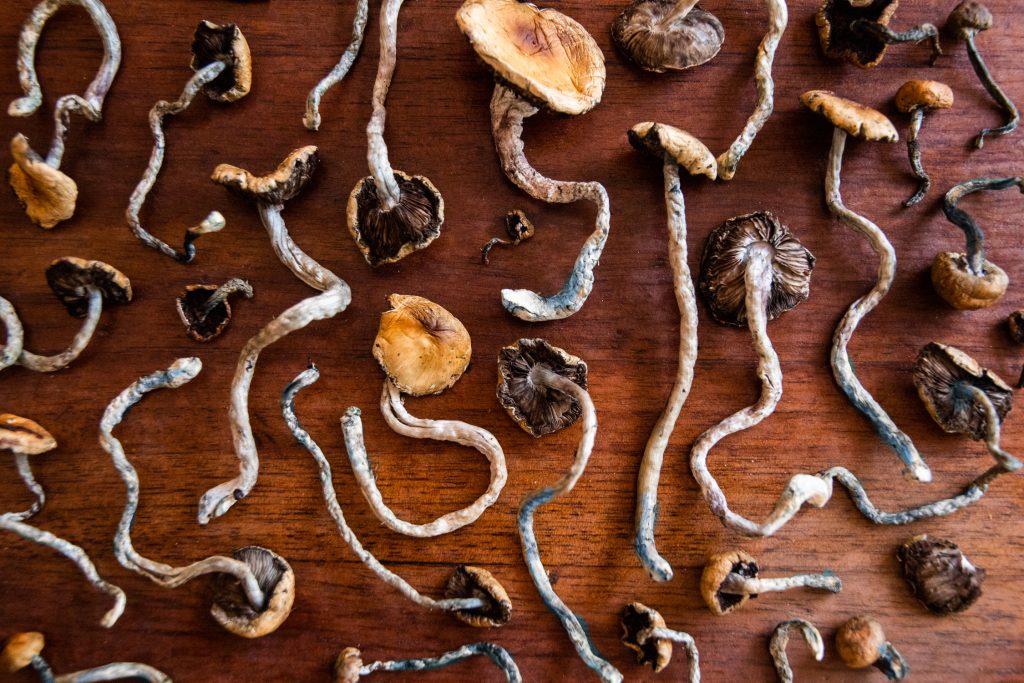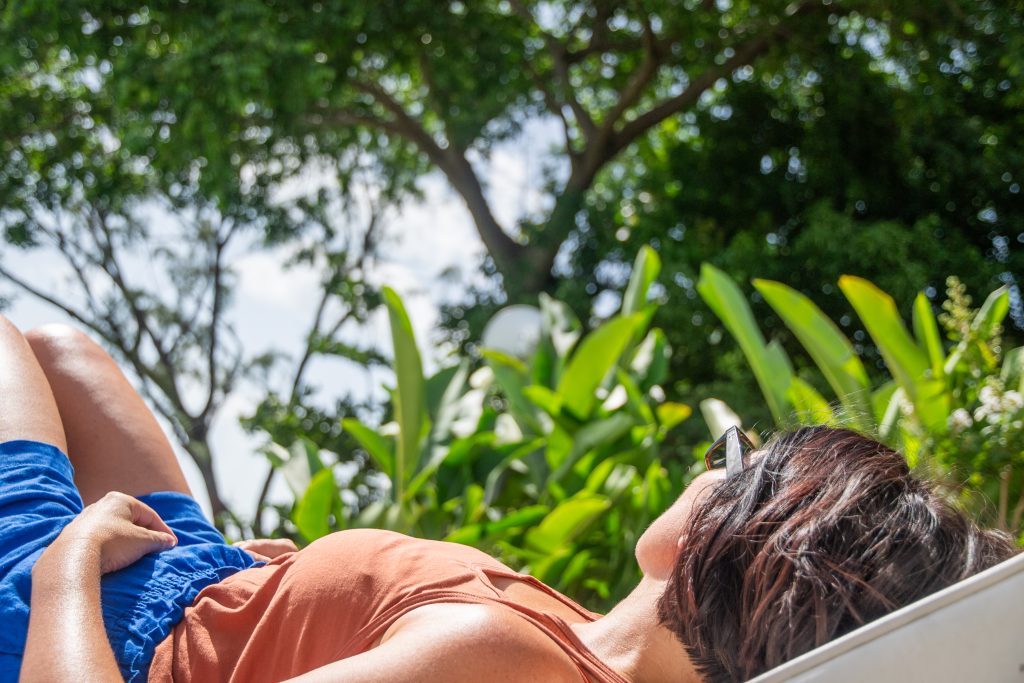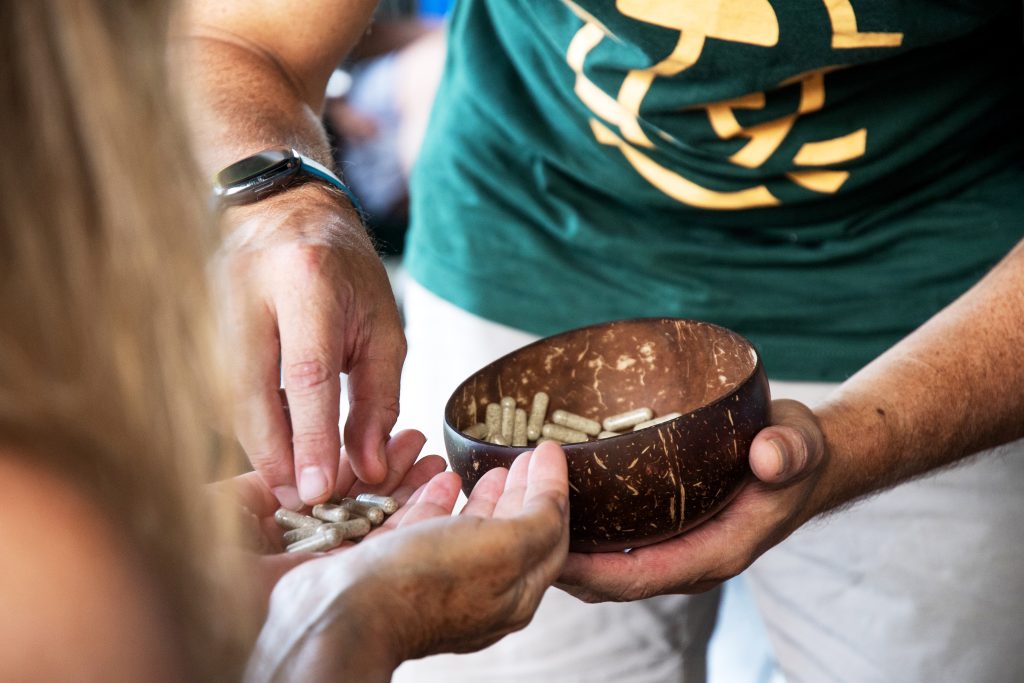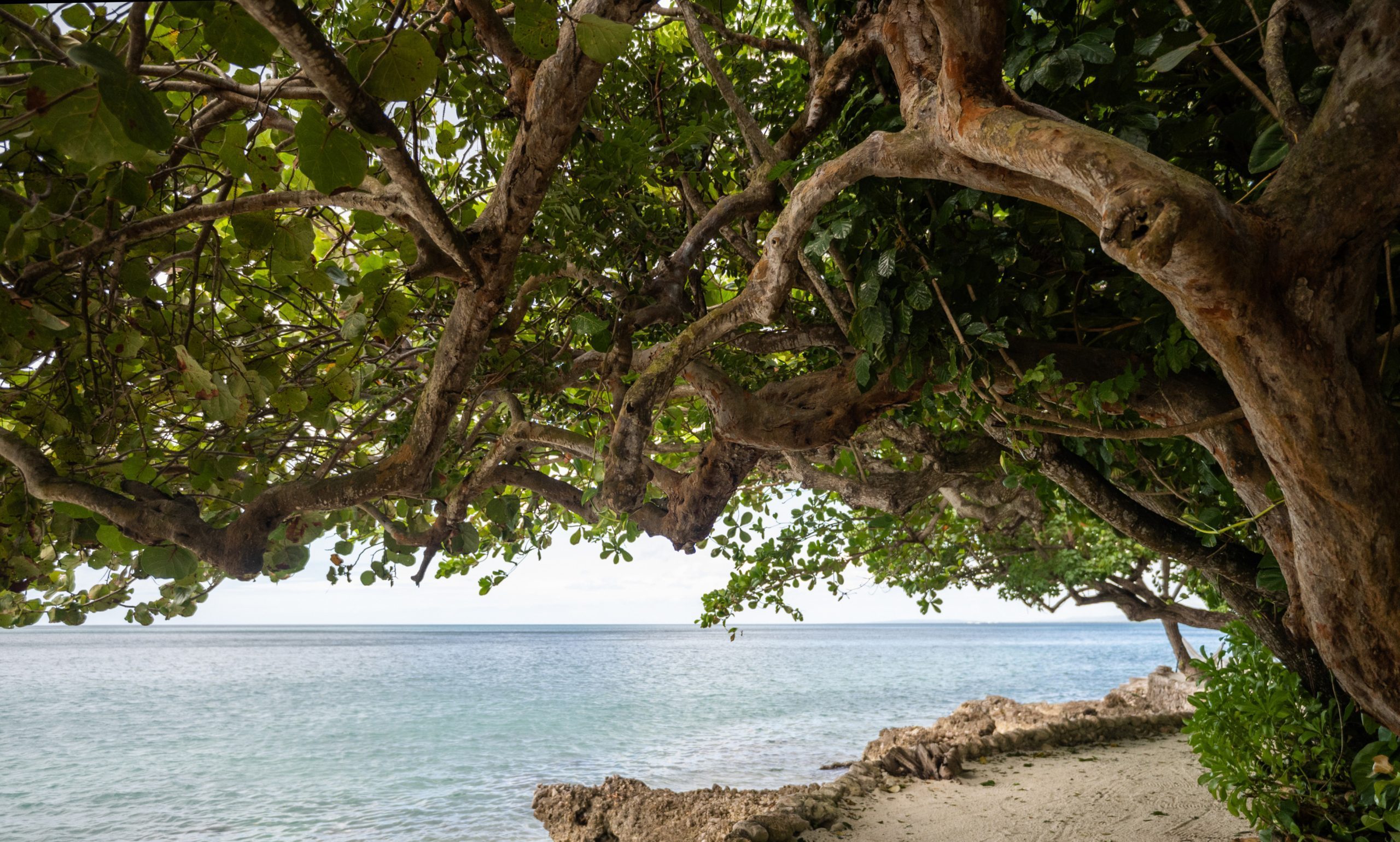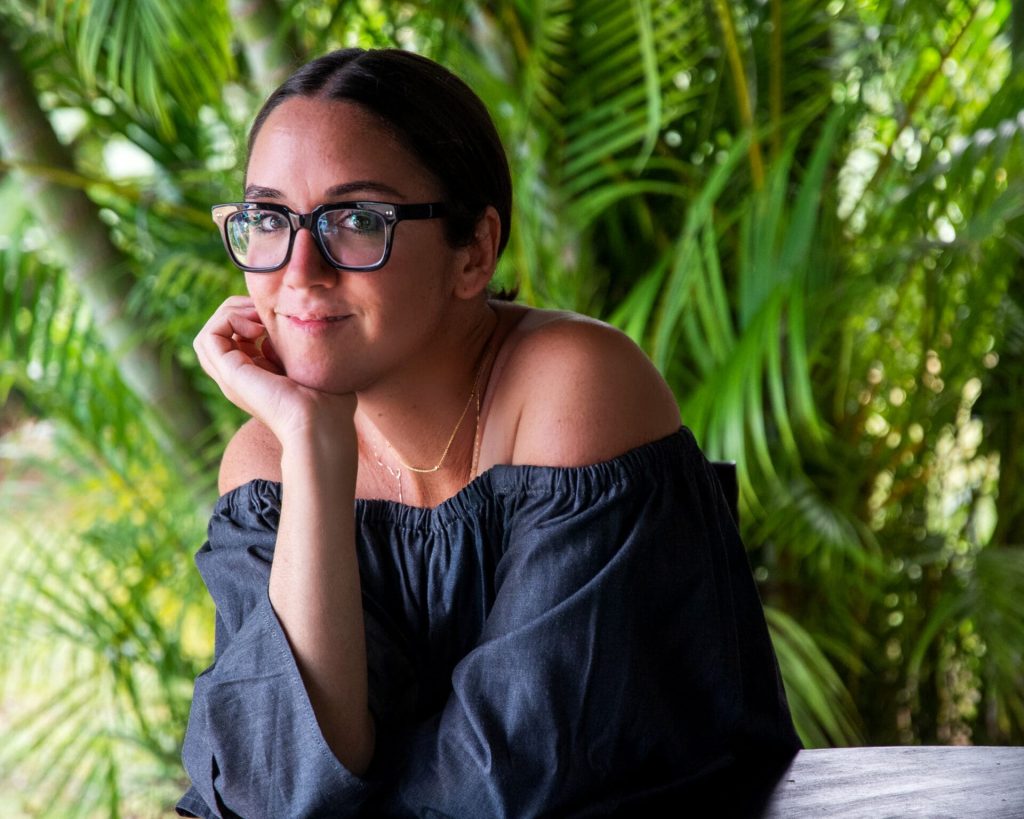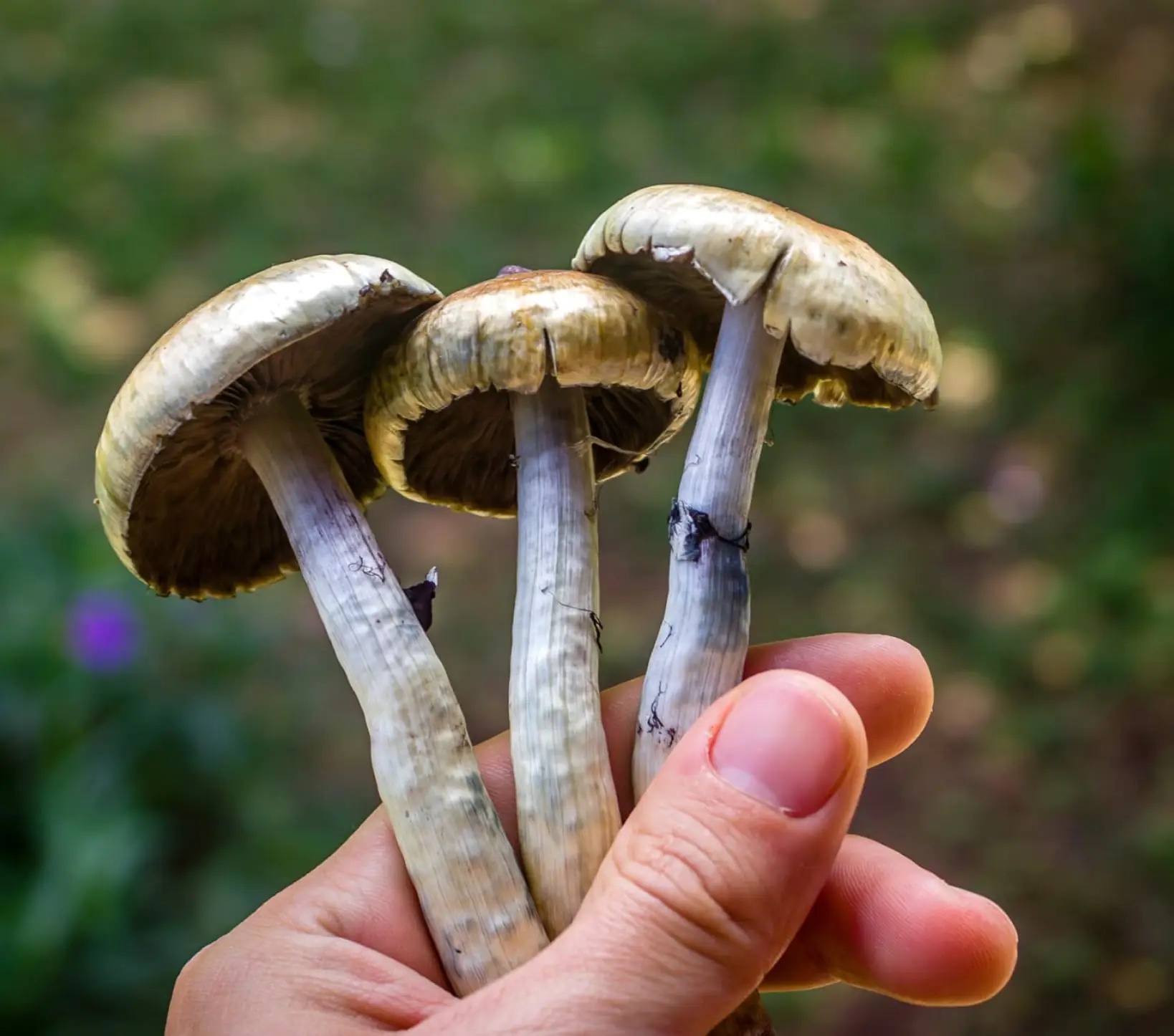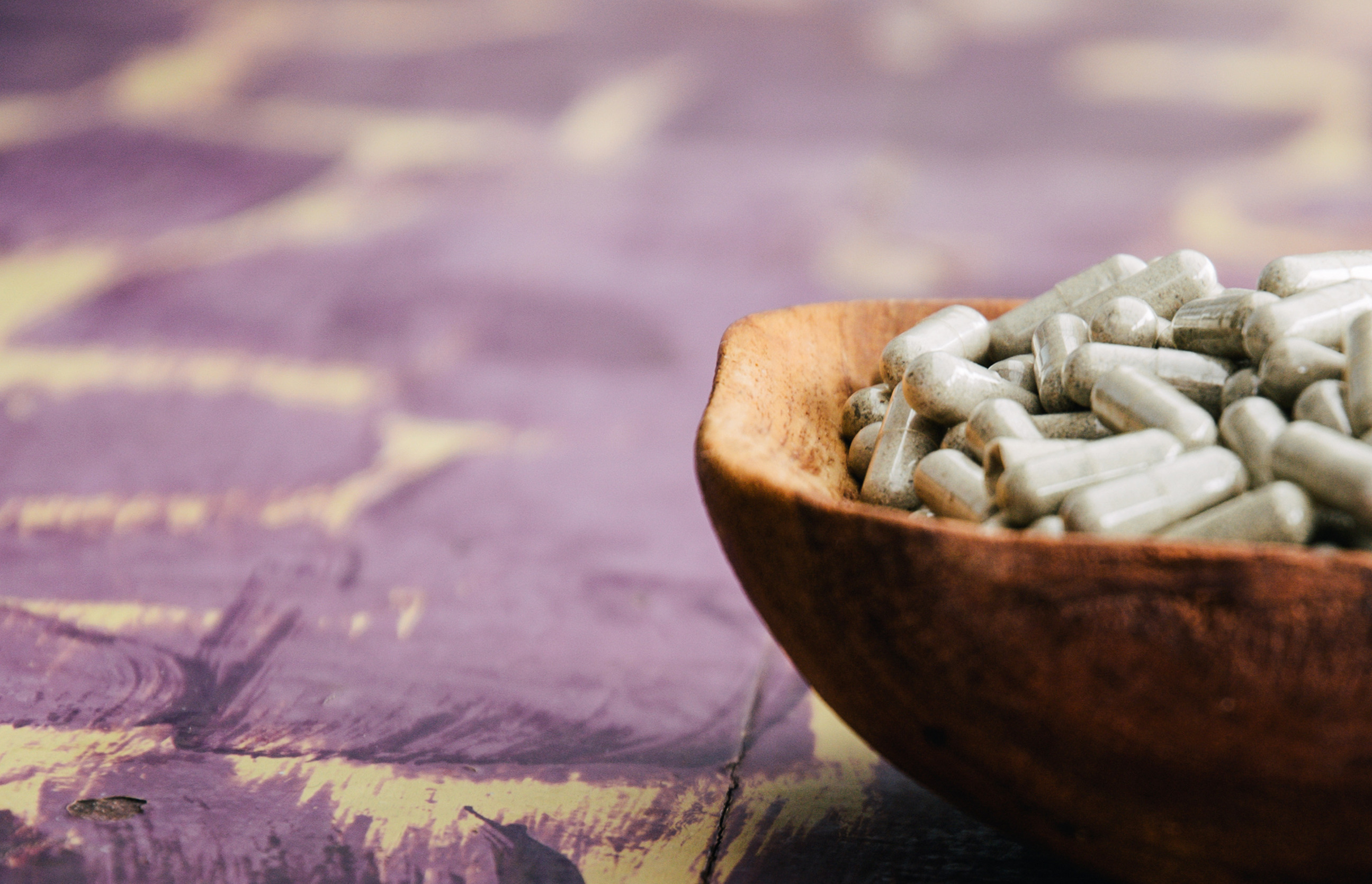
Psilocybin Dosing Guide: How to Find the Right Dose for Psilocybin Therapy
One of the key factors that determines the outcome of a psilocybin therapy experience is dose. Alongside ‘set and setting’, the amount of psilocybin mushrooms needs to be taken into account if you’re looking to have a transformative psychedelic experience.
Published on: August 29, 2025
The Importance of Dose for Psilocybin Therapy and How To Get it Right
No matter how finely you tune your mindset and the environment in which you take psychedelics, if the dose is too low, it can be difficult to have a breakthrough experience.
Clinical research has gone down the route of standardized doses for psilocybin therapy. Standardized dosing makes sense for research purposes, but it may also get in the way of maximizing therapeutic outcomes. At MycoMeditations, we see that personalized dosing is necessary to achieve the best results. There is no one-size-fits-all approach when it comes to how many grams to take for psilocybin therapy.
The dose for psilocybin therapy can make the difference between a transformative experience for a client and a mediocre outcome. Set and setting work in conjunction with a personalized psilocybin dose to determine the experience at a mushroom retreat. Clinical trials illustrate that set and setting can help patients get the most out of a standardized psilocybin dose. We take the lessons from these trials and personalize doses for retreat participants so that mental health benefits are maximized.
But getting a personalized psilocybin dose correct requires care and diligence. There are risks associated with dosing incorrectly, which may occur without proper client screening, training, or support available.
MycoMeditations dosing protocols are proven to be effective for psilocybin therapy. In this psilocybin therapy dosing guide, we will help you understand the factors that determine the right dose for clients seeking therapeutic psychedelic experiences.
The Standardized Dose for Psilocybin Therapy in Clinical Trials
Many psychedelic clinical trials have used a standardized therapeutic dose of 25 mg of synthetic psilocybin for the treatment of various mental health conditions. This equates to around 2.5 grams of dried Psilocybe cubensis mushrooms, based on the average potency of these psilocybin mushrooms. (25 mg can equate to up to 4 grams of less potent Psilocybe cubensis mushrooms.)
While 2.5 grams is generally considered a low to moderate dose, in clinical trials, researchers find it is sufficient to induce mystical experiences in percentage of the participants. As Sam Gandy writes, this “dosage appears to be a good compromise between maximizing the chances of a mystical experience, while minimizing potential for adverse reactions.” In clinical trials, ‘adverse reactions’ can include anything from nausea to transient anxiety. In our protocols, these aren’t symptoms to shy away from but rather are challenging reactions that, if worked through, can lead to deeper states of healing.
2.5–4 grams of Psilocybe cubensis mushrooms is on the lower end of the dosage range in our experience. While we understand why clinical researchers want to be on the conservative side, this doesn’t mean the standard dose of 25 mg is ideal for everyone. The results of clinical trials are positive, but trial participants represent a rare segment of people using psychedelics for mental health. They often have no comorbidities; they’ve been weaned off medications for long periods of time; and they undergo long periods of continual one-on-one therapy in the trials, which factors into the results.
We need to acknowledge the limitations of psilocybin dosing protocols in clinical research. Standardized psilocybin doses don’t allow room to optimize the dose for each individual. A personalized psilocybin dose can increase the efficacy of psilocybin therapy by taking all variables into consideration.
A growing body of evidence supports the effectiveness of psilocybin therapy. The Food and Drug Administration (FDA) has already granted two breakthrough therapy designations for psilocybin in the treatment of treatment-resistant depression (TRD) and major depressive disorder (MDD). If the FDA approves psilocybin therapy, it will include the approval of a standardized dose of psilocybin, along with a specific therapeutic approach and several psychotherapeutic support sessions. This means no variability or customization. For optimal psilocybin therapy, the dosing protocol should vary between individuals.
The Rationale for a Personalized Psilocybin Dose
Personalized dosing for psilocybin therapy takes into account all the factors that set someone up for the best possible psilocybin experience. (We will unpack these factors in a later section.) This doesn’t mean there is no value in standardized psilocybin therapy dosing, but this should be used more as an initial entry point, rather than something to rigidly stick to throughout subsequent dosing sessions.
In an initial psilocybin therapy session, a standardized dose can help us observe how a person responds to the effects of psilocybin. At MycoMeditations, we use a 3- or 4-gram dose of psilocybin mushrooms for all new guests. This is similar to the ‘high dose’ used in clinical trials.
In our experience of administering many thousands of psilocybin therapy sessions, this is a conservative dose that allows people to have a gentler experience to get familiar with altered states. However, this dose doesn’t typically push anyone truly into the psychological material they have ultimately come to us to process and heal from. There is a chance that this small dose induces a mystical experience, but the likelihood of a mystical experience is significantly higher with a larger dose.
A trained psychedelic facilitator can then see how the person reacts, and based on that, a future dose for psilocybin therapy sessions can be modified. You can see a variety of responses to a standardized dose. Visual effects are common (although they vary in intensity between individuals). Some people get insights (which also vary in their importance and lasting impact). However, 3–4 grams of dried psilocybin mushrooms is rarely the optimal dose. Once people gain familiarity from that initial experience, they are often ready for a higher dose for deeper therapeutic effects.
Why Use a Higher Dose for Psilocybin Therapy?
At MycoMeditations, we find that a personalized dose for psilocybin therapy to ensure significant and durable outcomes for depression, generalized anxiety, social anxiety, PTSD, and more often requires going into high-dose terrain. There are several reasons why high doses of psilocybin can encourage therapeutic experiences.
Increased Disruption of the Default Mode Network
The default mode network (DMN) is a network of brain regions that is most active during wakeful rest, such as during daydreaming and mind-wandering. Its overactivity is linked to conditions like depression. The weakening of its activity, when one is under the influence of psychedelics, is associated with mystical experiences and mental health benefits. High psilocybin doses are more likely to have powerful effects on the brain, including a weakening of the DMN, offering relief from negative, ruminative thinking.
Higher Probability of a Mystical Experience
Psychedelic mystical experiences – featuring self-transcendence, unity, profound insight, sacredness, and ineffability – are more strongly correlated with therapeutic benefits. They are not the only predictor of benefits: insights, emotional breakthroughs, and alterations to one’s sense of self matter, too. But we can’t discount the importance of spiritual experiences. For example, they’ve been associated with reduced fear of death and improved well-being.
Overcoming Psychological Resistance and Mental Barriers
With psychological support present, a higher psilocybin dose can help a client overcome unconscious barriers. When someone desperately wants to heal on a conscious level, they can still encounter psychological resistance during a psilocybin experience to avoid feeling uncomfortable emotions, which prevents them from fully letting go.
Low to moderate doses of psilocybin leave the ego structure (ie. their beliefs, identity, psychological patterns) largely intact, allowing them to maintain some level of control over the experience. A high psilocybin dose, in contrast, makes it natural to let go of control and surrender to the experience due to the disruption of DMN, which is essentially the ego structure previously described. This process allows unconscious psychological material to emerge into awareness for fuller processing.
We never push people to accept a high dose of psilocybin if they’re not ready for it. However, we recognize that when people are adequately prepared and supported, a high dose can help overcome aspects of ourselves that are based on fear and excessive need for control.
While large doses of psychedelics can be associated with distressing experiences in uncontrolled contexts, low-moderate doses can also lead to difficulties. Small doses can make it more likely that someone will resist the unfolding effects distressingly, when there is a potential for a personal breakthrough on the other side.
When a high-dose psilocybin experience is supported, it is easier for someone to feel safe, trust the experience, and surrender to it, which researchers find predicts positive, therapeutic experiences.
Larger doses can break through layers of resistance, where the mind is freer to process trauma and deep wounds without the rational, analytical mind standing in the way. Accessing this kind of experience leads to outcomes that are otherwise inaccessible with lower doses.
The key to taking the right amount of mushrooms, or a personalized psilocybin dose, is working with a trained, trauma-informed facilitator. These types of experiences can be deeply cathartic, so they require specialized, direct care. With the proper support present, a 5+ gram dose for psilocybin therapy is entirely safe and often the optimal path for best outcomes. based on our data.
Factors That Determine the Right Dose for Psilocybin Therapy
Deciding on a personalized psilocybin dose should take into account several factors, including:
Mental Health History
Generally, treatment-resistant depression and treatment-resistant anxiety require higher doses. Depression is shown to cause severe emotional blunting, which makes it challenging to process emotion within psilocybin therapy. Anxiety involves a mind that is in a constant state of hypervigilance, which can disrupt the unfolding psychedelic experience. More strongly muting the DMN can overcome these barriers, allowing one to access deeper emotional states.
History of Psychedelic Use
If someone has never used psychedelics before, then it could make sense to stick with a lower, standardized dose of psilocybin to mitigate the chances of overwhelm and distress. On the other hand, if someone attends a psilocybin therapy retreat with many experiences under their belt, including high-dose ones, then they would be more prepared to take a higher dose.
Willingness for Intensity
High doses are only appropriate if the client feels safe taking them and is willing to do so. Even when a mental health condition could benefit from a 5+ g dose of mushrooms, the client’s own readiness to face difficult material is the main factor that determines the correct dose for psilocybin therapy at that time.
Pre-existing Nerves
Some clients are so nervous and anxious before a dosing session that a large dose would not be wise, and can even be harmful. This is because psychedelics can magnify our inner state and emotions. Even if a high dose of psilocybin would benefit someone at some point in the future, if they’re excessively nervous, a lower dose is necessary to ensure they have a safe and comfortable experience.
Comfort with Psychedelics
Clients need to be able to trust the medicine they use. Lower doses allow clients to see how psilocybin affects them, making it easier to establish a personalized psilocybin dose for the next dosing session.
Quality of Previous Experiences
An initial standardized psilocybin dose helps facilitators gauge how open or resistant someone is during the experience, how intense it already is, the depth of the experience, how easily they retain insights from it, the emotional depth that is accessed, and their ability to make sense of it all. All of these factors enable facilitators to determine the ideal dose of psilocybin for each client.
Tolerance Buildup
When dosing sessions are close together, tolerance is a factor. At MycoMeditations, we administer doses 48 hours apart and have found that the optimal psilocybin dose must account for a 10–20% increase. For example, dosing 6 grams one day and aiming for a similar intensity 48 hours later would mean 7 grams is likely ideal.
Finding the Right Dose is a Careful Balancing Act
It can be challenging to find the right amount of mushrooms to take during a psilocybin retreat.
Too low a dose may prevent someone from accessing the kinds of altered states where their analytical mind, resulting from the Default Mode Network, goes offline. Dosing too high can cause people to get into a state of panic, where they fight the experience, which may lead to a prolonged state of distress.
Psilocybin retreat facilitators must work with clients at their current mental state and level of readiness. This personalized approach to psilocybin therapy dosing is the best way to establish the right amount of mushrooms to take.
Misconceptions About Psilocybin Dosing
We also want to clarify some misconceptions about determining the right dose for psilocybin therapy.
First, doubling a dose does not mean doubling the intensity. Each dosing session is unique. If anything, many guests at MycoMeditations retreats report that higher doses offer a ‘smoother’ experience. This is because their analytical mind is offline, and they feel more present with the fullness of the experience. Often, it’s the resistance, fighting, and grappling with fear that are the most difficult parts of a psilocybin experience.
In line with the ‘inner healing intelligence’ described in MAPS’ protocol for MDMA- and psychedelic-assisted therapy, if we can ‘get out of our own way’, the deepest kinds of healing experiences become possible through our own natural inner faculties.
A second misconception about personalizing psilocybin dosing is that doses should be adjusted based on weight. As Spriggs et al. note, there is a lack of evidence showing that bodyweight is a predictor of subjective experience to psilocybin.
Final Thoughts on Psilocybin Dosing Protocols
The factors outlined above are the most significant variables in determining the ideal dose for clients undergoing psilocybin therapy. These insights have come from over a decade of experience hosting psychedelic retreats and administering thousands of legal psilocybin therapy sessions to our guests.
At MycoMeditations, our psilocybin dosing protocol takes into account tried-and-tested factors to ensure that each client receives a psilocybin dose that maximizes their potential outcome. We consider the extensive list of aspects that consist of ‘set’, so that we strike a balance between the client’s level of preparedness and the amount of mushrooms that can elicit profound experiences and lasting benefits. This could mean 4 grams for one retreat guest and 8 grams for another guest.
This overcomes the limitations of psilocybin dosing protocols seen in clinical research and shares MycoMeditations' unique and proven dosing protocol, providing personalization and precision in our psychedelic retreat’s approach to psilocybin therapy.

